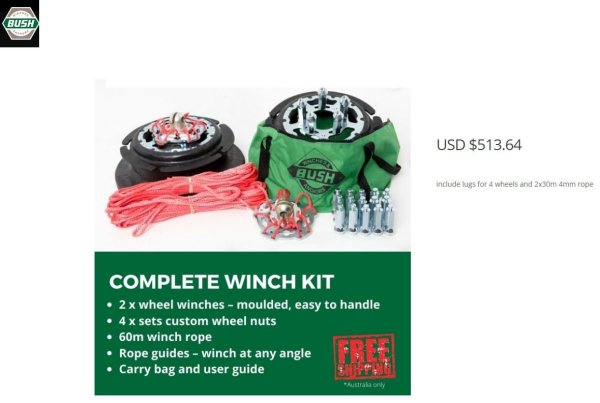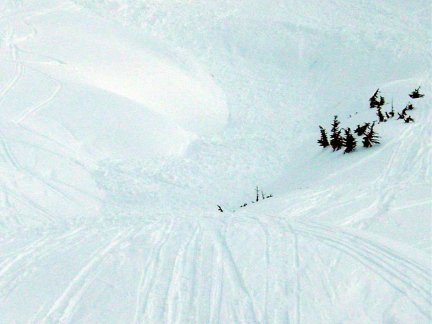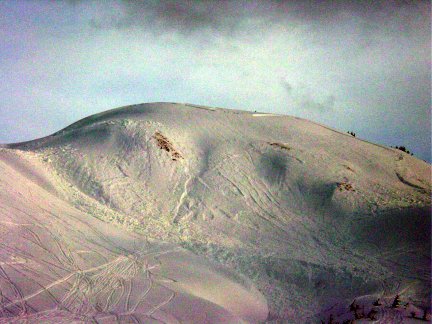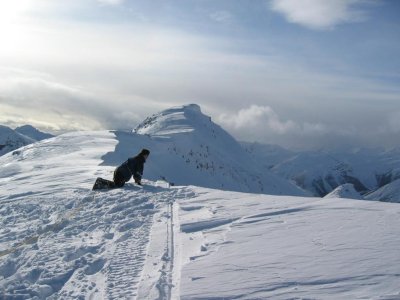
.jpg)
Avalanche and ambulance links; Some of these have both fixed wing and helicopter service (some have field rescue, too) :
Life flight Helicopter service for Washington and nearby States; (800) 232-0911
Survival items Version 2 from generic stories-people
Incidentally, if you get your vehicle stuck here's a nice product to get you out.
It works in snow, ice, rock or mud.

.jpg)
F.R.S. radios are real handy whether in town or on the hill. Here's a Frequency and tone (code) list if you need it.
Careful.....there could be a Static problem ....when gassing up your vehicle. (2MB file)
Also be care which button you push when checking out your new toy..... .




Some discussions found:
Avalanche victims are almost exclusively back country recreationalists--snowmobilers, climbers, snowboarders, snowshoers, skiers and hikers. Snowmobilers lead the list with twice the number of fatalities as any other activity. In 90 percent of avalanche accidents, the avalanche is triggered by the victim (or someone in the victimís party). A disproportionate number of avalanche fatalities occur when one snowmobiler gets stuck on a slope and another person rides up to help them. You canít dig yourself out of avalanche debris. Its like you are buried in concrete. Your friends must dig you out. What we normally call avalanches are "slabs" or cohesive plates of snow that shatter like a pane of glass and slide as a unit off the mountainside. Picture a magazine sliding off the table, with the victim standing on the middle of the magazine. Wind is the most common cause of avalanches. Wind can deposit snow 10 times faster than snow falling from storms. Wind erodes snow from the upwind side of obstacles and deposits snow on the downwind (lee sides). We call this "wind loading. Snow is very sensitive to the rate at which it is loaded or stressed. Two feet of snow added over two weeks is not a problem. Two feet of snow in two days is a much bigger problem. Two feet of snow in two hours is a huge problem. (Wind can easily deposit two feet of snow in two hours.) Then, finally the weight of a person can add a tremendous stress to a buried weak layer, not in two hours, but in two tenths of a second - a very rapid change.
Assessing the risk:
Almost all avalanches occur on slopes between 35 and 45 degrees. Slopes less than 30 degrees seldom produce avalanches and slopes steeper than about 50 degrees
luff so often that they tend not to build up into slabs.
The bad news is that exactly the kind of slopes we like to ski, snow board or snowmobile usually produce most of the avalanches.
When you hear the snow pack collapse catastrophically with a giant "whoomph", that's the sound of the snowpack screaming in your ear that it's extremely unstable.
Recently wind-loaded, steep slopes are almost always very dangerous while recently wind-eroded slopes are usually fairly safe.
Anchors need to be fairly thick to be effective.
For instance, a thick, mature grove of evergreen trees anchor the slab quite effectively while a sparse grove of aspen trees have very little effect.
What will happen to you if the slope slides?
It's very difficult to survive an avalanche if it strains you through thick trees or dumps you over a large cliff or deposits you into a crevasse or dumps you
into a narrow gully (creating a very deep burial).
On the other hand you have a fairly good chance of survival on a small avalanche path, without obstacles and a gentle run-out.
Never base your stability evaluation on just one test or observation. Thatís like deciding to get married after the first date. Bad mistake.
Stability analysis means integrating many different pieces of information together.
The best sign of avalanches are other avalanches. (But just because there are no avalanches around doesn't necessarily mean the area is safe.
Precautions:
Have an escape route planned. Always think avalanche. What will you do if you trigger an avalanche? Have a plan first. One at a time.
There always needs to be someone left in a safe spot to do the rescue. (Not to mention the possibility of the extra weight overloading the slab.
Use terrain to your advantage. Follow ridges, thick trees and slopes with safer consequences. You can almost always go back the way you came.
The route got you there, it will most likely get you back as well. Watch out for cornices. They always break farther back than you think.
Always give them a wide berth. NEVER, NEVER walk out to the edge of a drop-off without first checking it out. Many people have needlessly died this way.
If you get caught:
You're first job is to GET OFF THE SLAB. Grab some throttle and use your power and momentum to your advantage. If you're headed uphill, continue uphill.
If you're headed across the slope, continue to the side to safe snow. If you're headed downhill, you're only hope is to try and outrun the avalanche.
Remember that large avalanches travel 60-80 mph and they are difficult to outrun. Swim.
If you can't escape off the slab or grab a tree, then you need to swim hard.
A human body is about three times denser than avalanche debris and it tends to sink unless it's swimming hard. Clear an air space in front of your mouth.
As the avalanche finally slows down and just before it comes to rest, try and clear an air space in front of your mouth. Push a hand upward.
Visual clues allow your friends to find you faster. After the avalanche comes to a stop, the debris will instantly set up like concrete.
So any actions you take must occur BEFORE it comes to a stop.
In regard to recovering buried victims:
Watch them closely. Mentally fix the last seen area and closely watch to see where they end up.
This will greatly reduce the search times if you have a good idea where to begin the search.
If the victim is wearing a beacon, turn yours to receive and make SURE everyone in your party is turned to receive.
Look carefully for clues, hands sticking out of the snow, snowmobiles, skis, gloves. In most snowmobile burials, the victim is usually just uphill of their
snowmobile.
They only have a precious few minutes to breathe under the snow, so every minute counts. Spend about a half hour or an hour searching before you go for help.
With multiple burials, go for the shallow burials first.
Get them breathing but don't take the time to get them completely dug out, just keep moving and find the next victim and get them breathing, and so on.
Get as many people breathing as possible before returning to treat the injured.
Here's another danger. Those high peaks with their cornices are fun but dangerous to climb. In the case of the picture is was a real incident, where-is the person did survive, after spending the night in a body bag (the alive version) with a broken leg. He was lifted out the next day. The picture ones of his buddy trying to find out where he went the snow gave away and he and the sled fell a long way. Notice the searcher is tied off with a rope.

F.R.S. radios are real handy whether in town or on the hill. Here's a Frequency and tone (code) list if you need it.
![[Karl's sled page]](images/winter_home3.gif)